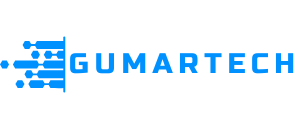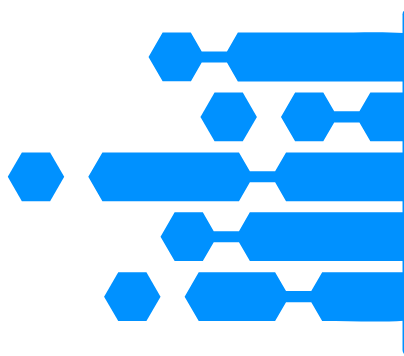Master Salesforce Segmentation for Marketing Success
In today’s competitive business landscape, understanding your customers and targeting them effectively is more critical than ever. This is where Salesforce custom segmentation comes into play. By leveraging Salesforce’s powerful CRM capabilities, businesses can delve deeper into their customer data to create tailored marketing strategies that resonate with specific audience segments.
Understanding the Importance of Custom Segmentation in Salesforce

Custom segmentation is not merely a buzzword; it’s an essential strategy for any marketer looking to engage their audience on a more personal level. In the age of information overload, consumers expect brands to understand their needs, preferences, and behaviors.
Custom segmentation allows businesses to categorize their customer base into distinct groups based on various criteria such as demographics, purchase history, and engagement levels. This categorization enables organizations to tailor marketing messages, promotions, and services to meet the specific needs of each segment. In this way, Salesforce custom segmentation acts as a bridge between raw data and actionable insights.
The significance of custom segmentation is profound:
- Enhanced Customer Experience: When you deliver personalized experiences that resonate with your audience, you’re not just marketing, you’re building relationships.
- Improved ROI: Targeted campaigns generally yield higher returns because they cater directly to the interests of the intended audience.
- More Efficient Resource Allocation: With well-defined segments, teams can allocate resources more efficiently, focusing on high-potential audiences instead of adopting a blanket approach.
Benefits of Custom Segmentation
Utilizing custom segmentation within Salesforce offers various benefits, including but not limited to:
- Increased Engagement: Customized messaging leads to stronger connections, resulting in higher open rates and click-through rates.
- Better Product-Market Fit: Through segmentation, businesses can identify which products or services resonate most with specific customer groups, allowing for improved product development.
- Strategic Insights: Segmenting your audience provides invaluable insights into consumer behavior that can inform broader business strategies.
The Role of Data in Segmentation
Data is the cornerstone of effective segmentation. A deep dive into your existing customer database can reveal patterns and trends that might otherwise go unnoticed. Properly analyzing this data is crucial for the effectiveness of your segmentation efforts. Without quality data, even the most sophisticated segmentation strategies can fall flat.
Setting Up Custom Segmentation in Salesforce

Creating custom segments in Salesforce is a multi-step process that begins with preparing your data. Each step builds upon the last, ensuring that each campaign you run is as effective as possible.
Preparing Your Data for Segmentation
Before diving into segmentation, it’s important to ensure that your data is clean, organized, and comprehensive. Dirty data, such as duplicates, inaccuracies, or missing information, can lead to incorrect conclusions and ineffective marketing strategies.
To prepare your data for segmentation:
- Clean Your Database: Regularly audit and cleanse your database to remove duplicate entries and correct inaccuracies. Tools like Salesforce Data Import Wizard can assist in managing this process.
- Enrich Your Data: Consider augmenting your customer data with third-party information. This could include demographic details, psychographics, or behavioral data that provide additional context for your segments.
- Standardize Data Formats: Ensure consistency in how data is entered and recorded. For instance, using standardized codes for regions or product categories makes filtering data much easier.
Utilizing Salesforce Objects for Custom Segmentation
Salesforce provides numerous objects that can be leveraged for effective segmentation. Understanding these objects is key to maximizing your segmentation capabilities.
- Accounts and Contacts: These two primary objects contain crucial information about your customers. You can segment based on account size, industry type, or contact role.
- Opportunities: Analyze the sales pipeline by segmenting opportunities based on deal size, stage, or expected close dates. This offers insights not only into customer segments but also into sales performance.
- Campaigns: Using the Campaign object, you can track how different segments respond to various marketing efforts. This feedback loop is essential for refining your segmentation strategy.
Creating Segmentation Criteria and Rules
Once data preparation is complete, the next step involves establishing clear rules and criteria for your segmentation.
- Demographic Segmentation: Group customers based on age, gender, income level, education, etc. This type of segmentation helps in understanding the general attributes of your customer base.
- Behavioral Segmentation: Classify customers based on their interactions with your brand, purchase frequency, browsing history, and loyalty program participation all offer valuable insights.
- Psychographic Segmentation: Delve deeper into customers’ lifestyles, interests, and values. This can help brands craft meaningful messages that resonate with their target markets.
Leveraging Salesforce Reports and Dashboards for Insights

One of the standout features of Salesforce is its robust reporting and dashboard capabilities. Once you have established your custom segments, it’s crucial to tap into these tools to gain insights and track performance.
Building Custom Reports
Salesforce allows users to create highly customizable reports that display information in a way that best suits their needs.
- Report Types: Choose from standard report types or create custom reports tailored to your specific segmentation needs. You can incorporate various fields related to your segmentation criteria.
- Filters: Use filters smartly to focus on the segments you want to analyze. This enables you to view specific subsets of data without being overwhelmed by the volume.
- Visualization: Salesforce’s reporting tools allow you to create visual representations of your data. Graphs and charts can make complex data sets easier to understand at a glance.
Creating Dashboards for Real-Time Insights
Dashboards serve as a powerful tool for monitoring the performance of your marketing initiatives across different segments.
- Key Metrics: Set up dashboards that highlight essential KPIs related to your segments. This could include conversion rates, engagement rates, and revenue generated from each segment.
- Real-Time Updates: Salesforce dashboards offer real-time updates, allowing teams to stay informed about ongoing campaigns and performance at any moment.
- Collaboration Features: Dashboard sharing among team members encourages collaboration and ensures that everyone is on the same page regarding segmentation efforts.
Advanced Techniques for Custom Segmentation

As marketers become more adept at utilizing Salesforce custom segmentation, they can explore advanced techniques to further refine their strategies. Integrating modern technologies and methodologies can significantly enhance segmentation efforts.
Using AI and Machine Learning for Predictive Segmentation
Artificial Intelligence (AI) and machine learning are revolutionizing how we view customer segmentation. These technologies enable businesses to forecast future customer behaviors and preferences based on historical data.
- Predictive Analytics: By analyzing past buying patterns, AI can predict what products specific segments might be interested in. This allows businesses to proactively market to those segments.
- Automated Segmentation: Machine learning algorithms can automatically adjust segments based on changing customer behavior, ensuring that marketing efforts remain relevant over time.
- Risk Assessment: AI can also identify potential risks related to customer retention, enabling businesses to target at-risk segments with timely interventions.
Integrating Third-Party Tools with Salesforce for Enhanced Segmentation
The integration of third-party tools within Salesforce can greatly amplify segmentation capabilities.
- Email Marketing Platforms: Tools like Mailchimp or HubSpot can integrate seamlessly with Salesforce, allowing marketers to segment their email lists based on CRM data.
- Social Media Analytics: Analyzing social media data can provide valuable insights into customer sentiment and engagement, enhancing segmentation strategies across digital channels.
- Customer Journey Mapping Tools: Integrating tools that help map customer journeys can provide insights into how different segments interact with your brand across various touchpoints.
A/B Testing and Iteration to Refine Segments
A/B testing is an essential component of refining your segmentation strategy. By experimenting with different approaches, you can determine what works best for each segment.
- Testing Messaging: Create variations of messages tailored to different segments. Analyzing the responses will guide you toward the most effective communication styles.
- Channel Optimization: Experiment with various marketing channels for specific segments. Some audiences may respond better to emails, while others prefer social media ads.
- Ongoing Iteration: Continuous refinement is vital for maintaining effective segmentation. A/B testing should be seen as an ongoing process rather than a one-off effort.
Personalization Strategies Based on Segmentation Data
Personalization goes hand in hand with segmentation. Tailoring content and experiences based on the unique characteristics of each segment can dramatically improve engagement and conversions.
- Dynamic Content: Leverage dynamic content in emails and landing pages that changes based on the customer’s profile or behavior.
- Targeted Offers: Create exclusive promotions for specific segments based on their purchasing behavior or preferences. This creates a sense of exclusivity and can drive immediate action.
- Feedback Loops: Establish mechanisms for gathering feedback from segments to continually refine personalization strategies. Surveys or direct outreach can yield valuable insights into customer satisfaction and preferences.
Best Practices for Effective Custom Segmentation

While mastering Salesforce custom segmentation involves various techniques and tools, adhering to a set of best practices can ensure lasting success.
Regularly Reviewing and Updating Segmentation Strategies
Market dynamics are constantly changing, and so are customer preferences. Regularly reviewing and updating your segmentation strategies is imperative for staying relevant.
- Quarterly Reviews: Schedule regular audits of your existing segments to assess their effectiveness. Are they still aligned with your business goals?
- Adapting to Trends: Be flexible and willing to adapt your segments based on emerging trends or shifts in consumer behavior.
- Soliciting Feedback: Engage your teams and customers in discussions about segmentation effectiveness. Their input can provide fresh perspectives and ideas.
Collaborating Across Teams for Comprehensive Insights
Segmentation shouldn’t exist in a vacuum. Harnessing insights from multiple teams can provide a fuller picture of customer behavior and preferences.
- Sales and Marketing Alignment: Ensure that your sales and marketing teams work closely together. Sales professionals often have direct insight into customer pain points that can inform segmentation.
- Cross-Department Collaboration: Encourage collaboration between departments, such as customer service and product development, to gather diverse insights about customer needs.
- Shared Reporting: Utilize shared reports and dashboards that allow insights from various teams to be collated and analyzed collectively.
Ensuring Compliance with Data Privacy Regulations
As data privacy becomes increasingly important, ensure that your segmentation practices align with regulations such as GDPR or CCPA.
- Transparency: Clearly communicate how customer data will be used in your segmentation strategy. Gaining consent is crucial in building trust.
- Data Minimization: Only collect data that is necessary for your segmentation efforts. Avoid overstepping boundaries that could jeopardize customer relations.
- Regular Audits: Conduct periodic reviews of your data management practices to ensure compliance with evolving regulations.
Training Staff on Utilizing Segmentation Features in Salesforce
Even the best segmentation strategy can falter if staff are not equipped to execute it effectively. Training is crucial.
- Hands-On Training: Offer hands-on training sessions focused on using Salesforce’s segmentation tools and features.
- Resource Material: Provide staff with documentation and guides for reference. This resource can empower them to utilize segmentation effectively.
- Encouraging Innovation: Foster an environment where employees feel comfortable suggesting new ideas for segmentation based on their experiences.
Wrap it up
Mastering Salesforce custom segmentation is a journey that requires continuous learning and adaptation. By thoroughly understanding the importance of segmentation, setting it up correctly, leveraging advanced techniques, and adhering to best practices, businesses can create targeted marketing strategies that not only resonate with their audience but also drive substantial results.
The power of custom segmentation lies in its ability to transform data into actionable insights, enabling marketers to foster deeper connections with customers, maximize return on investment, and maintain a competitive edge in an ever-evolving market landscape. As technology continues to advance, remaining agile and responsive to changes in customer behavior will only enhance the efficacy of segmentation strategies moving forward. Embrace the challenge, invest in your segmentation efforts, and watch as your marketing initiatives flourish.




